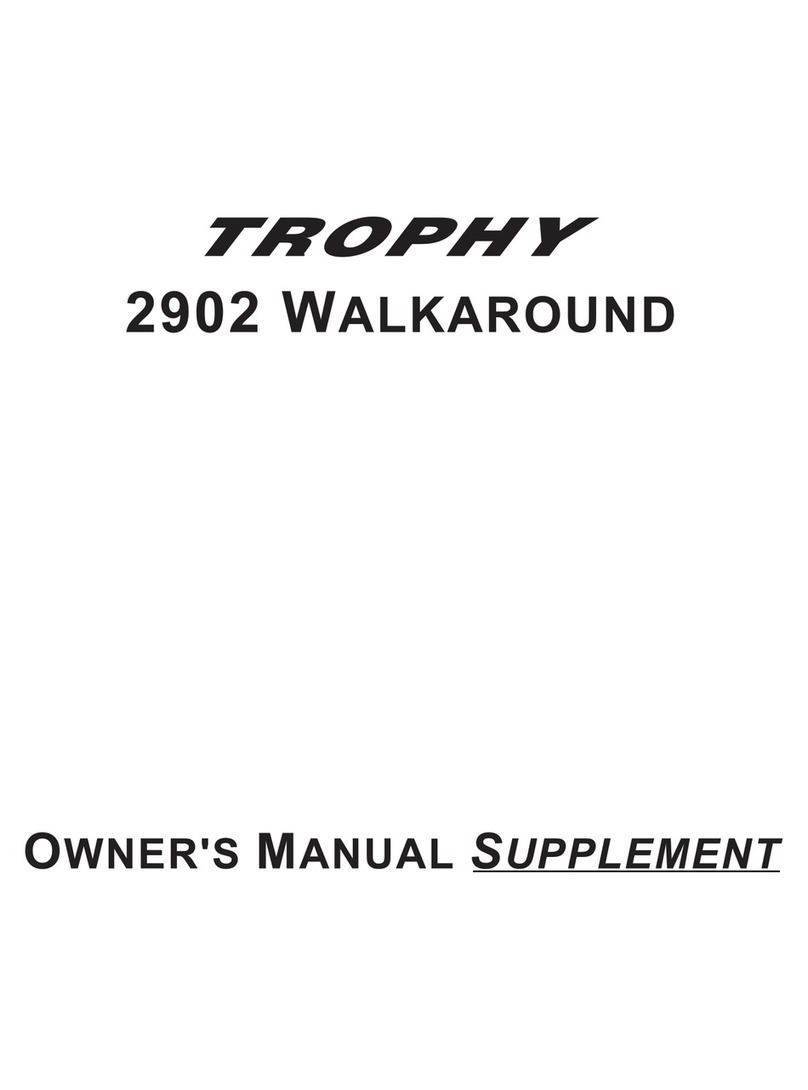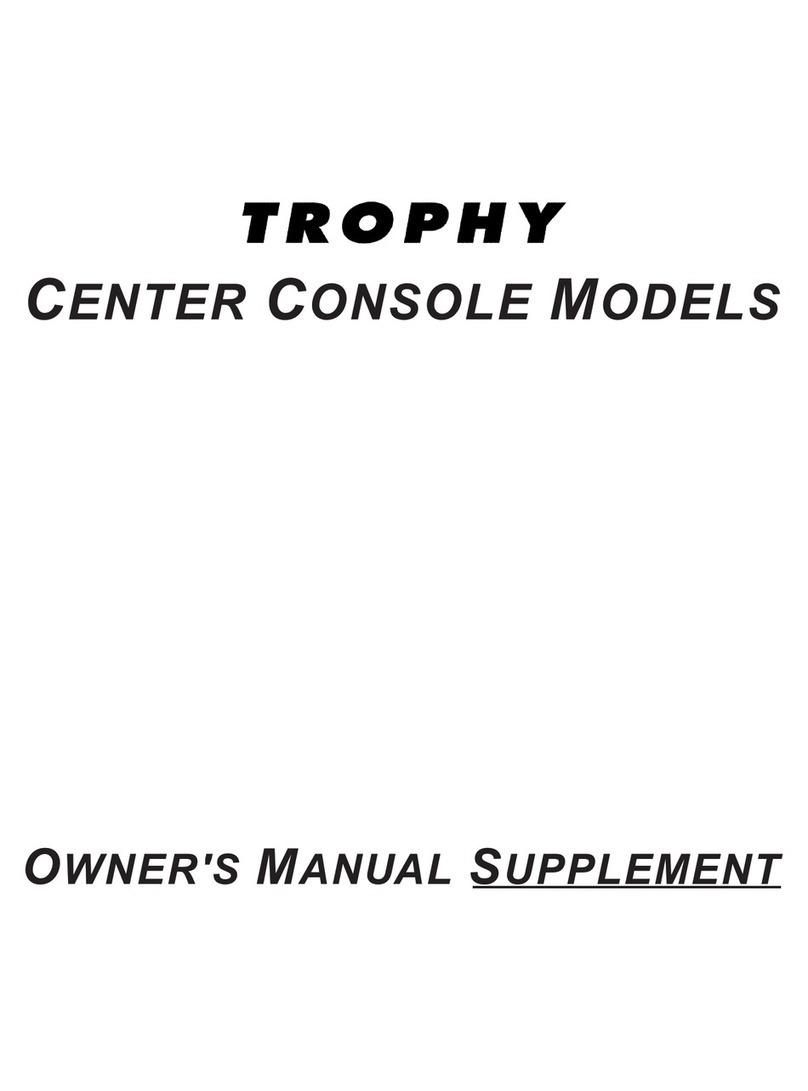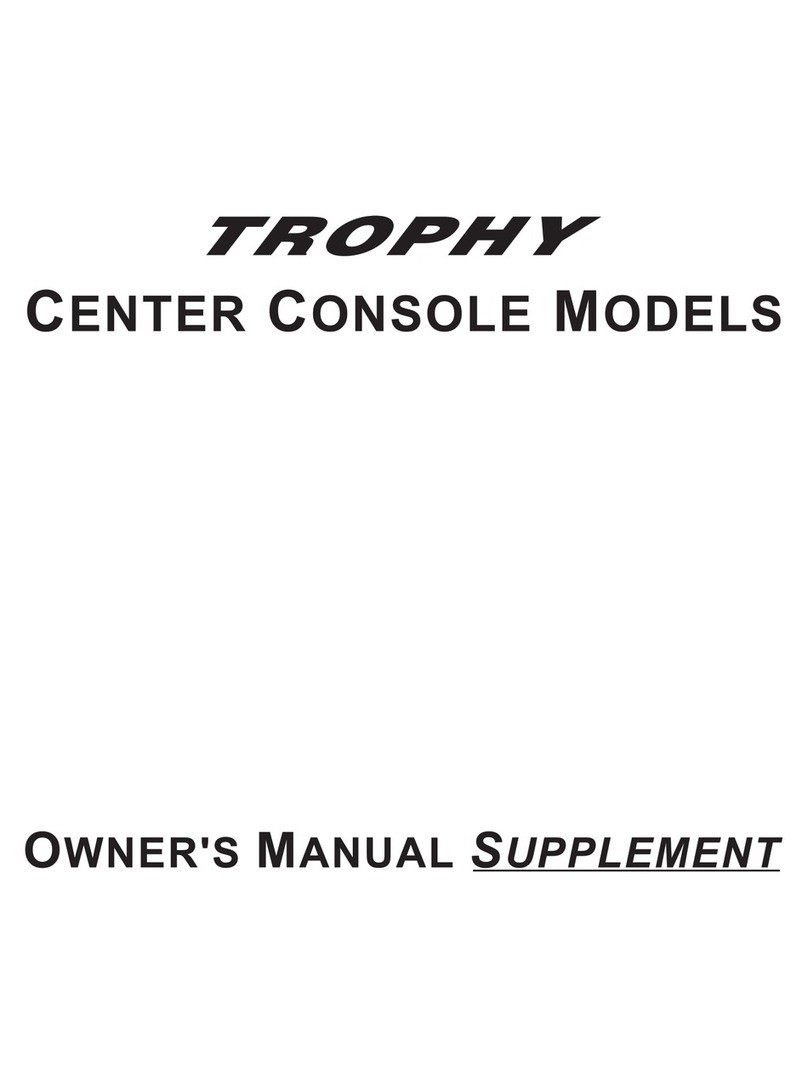4
Chapter 1: Welcome Aboard! 1901 Bay Boat •Owner’s Manual Supplement
Safety Standards
•Your boat’s mechanical and electrical systems were designed to meet safety standards in effect at the time it
was built.
•Some of these standards were mandated by law, and all of them were designed to insure your safety and the safety
of other people, vessels and property.
Read this supplement, the Sport Boat Owner’s Manual, and all accessory instructions for important safety standards
and hazard information.
FALLING and ROTATING PROPELLER HAZARD!
•NEVER allow anyone to ride on parts of your boat NOT designed for
such use.
•Sitting on seat-backs, lounging on the forward deck, bow riding, gun-
wale riding or occupying the transom platform while underway is especially hazardous and
WILL cause personal injury or death.
DANGER!
!
ROTATING PROPELLER and CARBON MONOXIDE
POISONING HAZARD!
•NEVER allow anyone to occupy, or hang from, the
back deck or swim platform while the engine(s)
are running.
•Teak surfing, dragging, or water skiing within 20 feet
of a moving watercraft can be fatal.
DANGER!
!
DANGER
PERSONAL SAFETY HAZARD!
•ALWAYS secure the anchor and other loose objects BEFORE getting underway.
•The anchor and other items that are NOT properly secured can come loose when your boat
is moving and cause personal injury or death.
DANGER!
!
A wide variety of components used on this vessel contain or emit chemicals known to the State
of California to cause cancer and birth defects and other reproductive harm.
Examples Include:
•Engine and generator exhaust
•Engine and generator fuel, and other liquids such as coolants and oil, especially used
motor oil
•Cooking fuels
•Cleaners, paints, and substances used for vessel repair
•Waste materials that result from wear of vessel components
•Lead from battery terminals and from other sources such as ballast or fishing sinkers
To Avoid Harm:
•Keep away from engine, generator, and cooking fuel exhaust fumes.
•Wash exposed skin thoroughly with soap and water after handling the substances above.
WARNING!
!


































